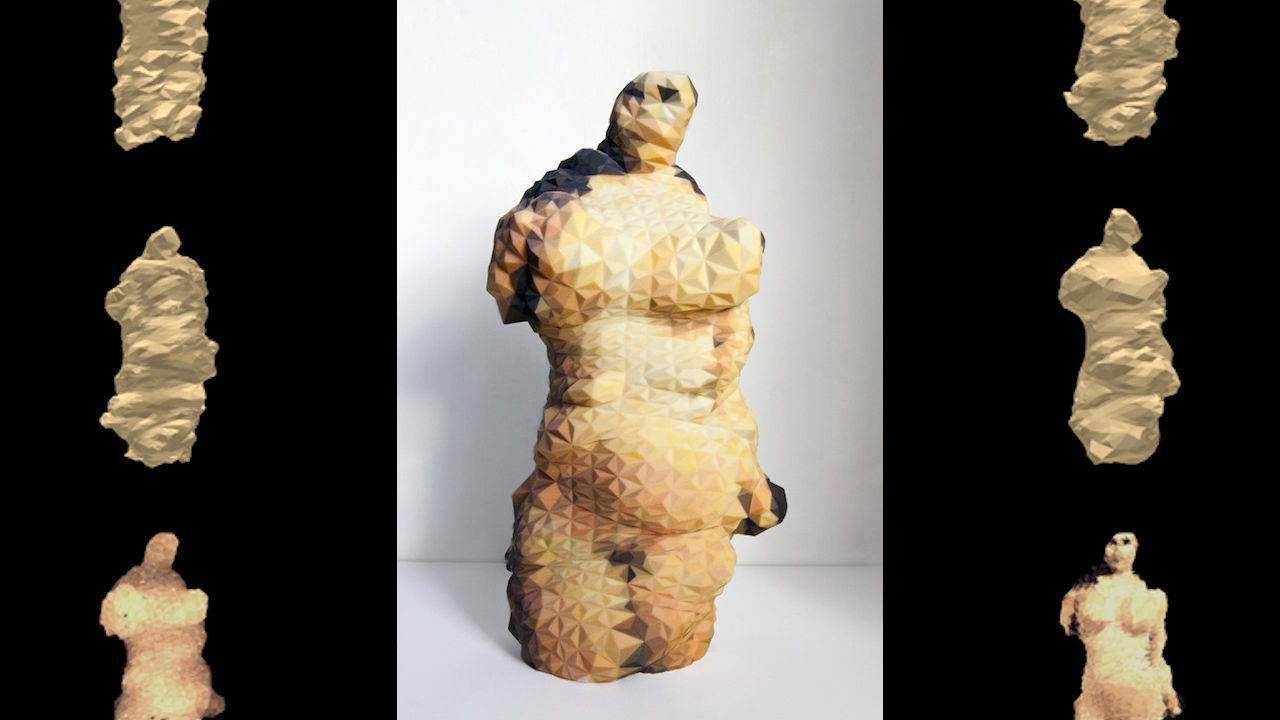To create Venus of Google, Matthew Plummer-Fernandez first took a photograph. Then, he uploaded that photo, of “a box filled with feathers and LEDs,” into Google’s reverse image search. After this image of a woman in a “Body Wrap” arrived in the results, Plummer-Fernandez used his own algorithm, similar to Google’s, to sculpt a blank digital slate into a replica of that woman. What you see in the center of the image above is a 3D-printout of the result.
Plummer-Fernandez was commissioned to create a piece that riffs on “exquisite corpse,” but the result feels more like “whisper down the lane,” as each cog in the art-making machine takes input from the preceding piece, then uses its own limited faculties to try to recreate it.
“I’m not that interested in my interpretation of an object or image, I’m more excited by seeing how an algorithm interprets it, and Google’s technology is increasingly becoming an accessible form of computer vision that tries to do that for you,” the artist told Creative Applications. “It is currently rather impractical and I like that about it. I like to see Google fail at recognising objects and draw up a collage of totally non-related artefacts, perhaps a side effect of having too many options to retrieve, with many images having just the right shade of colour and shape to dilute the search results.”
Once Plummer-Fernandez’s software gets the input photo, in this case, the woman in her underwear, it implements a “hill-climbing” algorithm, which makes random changes to a blank prism, or “mesh,” then checks the changes against the original image. If the changes bring the mesh closer to the image, they’re saved and the process continues, if not, they’re scrapped.
And what of the classical sculpture-baiting title and choice of photo? Plummer-Fernandez explains:
There is an element of collaboration between the algorithms and myself, its more like having algorithmic art assistants… I agree that I’m perhaps conditioning the viewer with name associations to primitive art, but the name actually came about from hearing the Venus connection suggested to me by others. Venus figures tend to be named after the place where they were found so it was just too tempting to play on that. I’m also interested in primitivism and early human culture – not just the artefacts but the level of intelligence we guess to be behind it.


